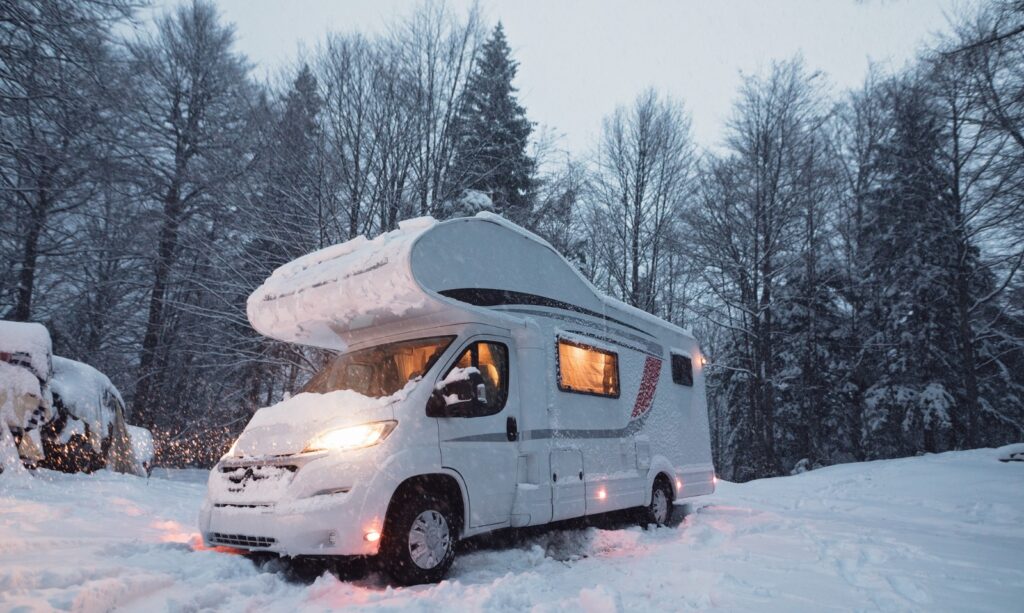Climate change affects winter in different ways. Although it may seem counterintuitive, global warming can increase snowfall in some regions as the heat causes more water to evaporate, leading to heavier rain and snow. On the contrary, in some parts of the world, it has caused winter seasons to get warmer and less snowy than they used to be.
And as you may already know, travel and tourism also contribute to greenhouse gas emissions. Winter tourism, in particular, contributes to various forms of pollution ——from burnt coals adding to carbon pollution and plastic waste that gets buried in snow, hastening melt rates and disrupting winter wildlife.
Thus, promoting sustainable practices is crucial to preserve the beauty of winter travel destinations. So, whether you’re planning a getaway abroad or just exploring your local area during winter, here are six tips to help you promote sustainability while exploring snowy landscapes:
Choosing Sustainable Accommodations

When planning your winter travel, choosing accommodations that help promote energy efficiency and environmental conservation is essential. Look for lodges and resorts with eco-friendly practices that reduce carbon footprint and conserve resources. More hotel booking sites now add ‘sustainability’ level signs or eco-labels on hotels, which you can use to find eco-friendly accommodations.
One unique option is choosing a campervan as your accommodation. Recreational vehicles (RVs) have a significantly smaller carbon footprint than using hotels. That’s because Most RVs have inverters that can power devices off-grid, which can minimise reliance on electricity. So, if your family loves going on local travels throughout the year, purchasing motorhomes may be a good idea. However, when going with this type of sustainable accommodation, it’s crucial to understand the steps to keeping your campervan warm in winter to ensure your family’s comfort.
Packing Light
During winter travel, packing light isn’t only convenient and environmentally friendly. The weight of your luggage affects fuel consumption, especially when travelling by air. Only bringing the essentials is best in this regard.
To minimise the need for extra clothes, opt for reversible outerwear and versatile items that you can mix and match to create different outfits. Packing layers of thin but insulating clothes instead of a few bulky ones is also recommended. This will provide you with more variety of clothes to mix and match. And to make the most of it, do not bring a clothing item if you cannot wear it at least twice.
Conserving Energy
When travelling in winter, be mindful of your energy usage, as it can significantly impact the environment. Turn off the lights and electronics when not in use. Whenever possible, utilise natural light instead of relying on artificial lighting.
When enjoying the outdoors, minimise the amount of energy you consume. Use rechargeable batteries for all your electronic devices and invest in a portable solar charger. These items ensure you have a renewable power source for your devices, so you don’t have to rely on an electrical power source.
Also, opt for activities that don’t use fuel-powered machinery. Try snowshoeing instead of going on a snowmobile tour to explore the winter landscape. You can also go ice skating and sledging, which will give you a good workout too.

Avoiding Single-Use Plastics
Plastics, especially single-use items, significantly threaten snow conservation efforts as microplastics can speed up snow’s melt rate. Aside from polluting the environment, plastics also take hundreds of years to break down. To reduce environmental impact, avoid using disposable plastics during your winter travel.
You can invest in a reusable water bottle and use it for all your beverages. This simple switch reduces the need for purchasing plastic bottled drinks, which will help you save not only the environment but your travel cash too. You can also bring reusable utensils to enjoy takeaway meals that typically come with single-use plastic utensils.
Supporting Local Businesses
Another way to contribute to snow conservation is by supporting local businesses in your winter travel destinations. As much as possible, eat at local restaurants and buy souvenirs from small, locally owned shops. These local businesses contribute to the reduction of carbon footprint linked to long-distance transportation required to transport goods. This will also save you time as you won’t have to travel farther just to eat.
Practising Responsible Winter Recreation
Be mindful of the environment when participating in winter activities during your travels. Prevent harm to fragile ecosystems by sticking to designated trails and areas. Be kind to wildlife and do not feed nor touch animals, as this may alter their natural behaviour and cause lasting harm.
If you enjoy skiing, snowboarding, or snowshoeing, avoid restricted areas and stay on marked trails. More importantly, make sure not to leave any waste behind and dispose of litter trash properly.
Remember, even the tiniest piece of trash can impact the ecosystem’s delicate balance.
Embrace Sustainable Winter Travel
You can promote snow conservation by practising sustainable habits during winter travel. Opt for sustainable accommodations, avoid single-use plastics, pack light, and practice responsible winter recreation. But keep in mind that these sustainable practices will only help the cause if you turn them into habits. Maintain these practices not just in all your travels, no matter the season, but also in your daily lifestyle too.

